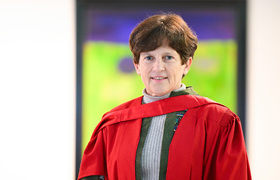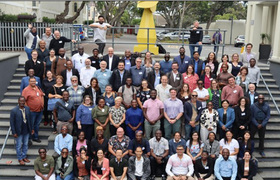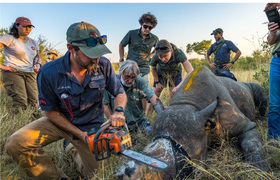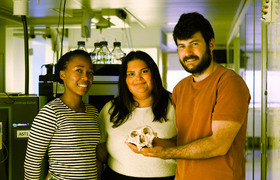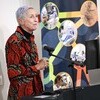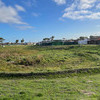Novel diagnostic testing technique: a game-changer in the fight against TB
12 April 2023 | Story Lara Wiese. Photo Pixabay. Read time 7 min.
Tuberculosis (TB) remains a major public health priority globally, and the foremost infectious disease killer in sub-Saharan Africa. In many TB-endemic countries, it sets back national gross domestic product by between 2 and 3% – with approximately 11 million people falling ill with TB for the first time annually.
What’s terrifying is that 40% of TB cases (two in every five) remain undetected, despite considerable improvements in the quality of TB diagnostics over the years. And the COVID-19 pandemic has exacerbated the crisis. On average, one person with TB infects about 20 other people they come into contact with. Therefore, detecting and treating those “missing” patients (approximately 150 000 per annum in South Africa), who serve as a reservoir for transmission of drug-sensitive and drug-resistant strains of the bacteria is crucial for TB control.
Passive case-finding model
But how do healthcare workers accurately identify patients with TB? According to Professor Keertan Dheda, the head of the University of Cape Town’s (UCT) Centre for Lung Infection and Immunity, the current global public health TB strategy relies on a passive case-finding model. This means that patients self-present at healthcare facilities when they are symptomatic. And once prospective TB patients have been identified, clinicians use the smear-microscopy technique – an age-old diagnostic standard-of-care that requires clinicians to look for bacteria under a microscope – to diagnose patients. But this technique does not yield accurate results, and other expensive molecular diagnostics are reserved for more difficult cases.
Therefore, implementing active case finding (ACF) techniques – that moves diagnostic testing out of the laboratory and into the community – is necessary to identify, treat and curtail the spread of the disease.
A diagnostic alternative
The XACT2 study – an open-label randomised control trial, led by Professor Dheda and managed by Dr Ali Esmail, the head of the clinical trials unit at UCT’s Lung Institute – aimed to do exactly that. The model is set to revolutionise TB diagnosis and treatment by enabling early detection of infectious cases.
“A total of 584 participants (median age of 39 years of which 65% were female) in the community with HIV infection or symptoms of TB, were randomly selected to be diagnostically tested for TB.”
Funded by the United States National Institutes of Health and the South African Medical Research Council, the XACT2 study was carried out on participants in the Mitchells Plain and the Klipfontein health districts in Cape Town. During the study, researchers compared two diagnostic approaches for TB and the findings were recently published in Nature Medicine – a prestigious medical journal.
The XACT2 mobile clinic is described as an active case-finding package. During the study, health professionals made use of a portable, battery-operated molecular tool, GeneXpert Edge – a standardised testing device that detects TB DNA in sputum. The testing was done in a low-cost minivan mobile clinic.
“A total of 584 participants (median age of 39 years of which 65% were female) in the community, with HIV infection or symptoms of TB, were randomly selected to be diagnostically tested for TB using either the onsite DNA-based diagnosis or the traditional smear-microscopy method, synonymous with passive case finding,” Dheda said.
The results
He said even though the GeneXpert Edge only picked up about 52% of TB cases in the respective communities, the device detected almost 100% of the likely infectious cases. The number of at-risk people (those with TB symptoms or people living with HIV) who needed to be screened to detect one case of active TB was 18 with the GeneXpert Edge device, versus 99 using the smear-microscopy model.
Research indicates that the treatment initiation process was also considerably faster using the GeneXpert Edge device (within seven days), compared to the smear-microscopy model (within 21 days). All patients who tested positive for TB via the GeneXpert Edge device were steadily in their treatment programmes within 60 days post-diagnosis, compared to only 46% of those diagnosed via the smear-microscopy model.
“Rapid treatment initiation remains the most effective way of rendering patients non-infectious. Thus, the main advantage of mobile testing is that the diagnosis of TB is made very early on in the course of disease, before it is spread to other individuals,” Dheda said.
Challenging a traditional public health strategy
Dheda said these results are set to transform the manner in which clinicians manage TB. He said moving diagnostics right onto patients’ doorsteps to locate those in need of treatment is an enormous benefit and means patients receive direct links to care and appropriate intensive follow-up as a community-centred, transmission-interruption intervention. The technique also defines a new standard of care for ACF techniques.
“To eradicate TB it is essential to perform community-based ACF using highly accurate tools.”
“To eradicate TB, it is essential to perform community-based ACF using highly accurate tools as part of the national TB programme. The XACT case finding strategy could also ultimately be linked to new advances in TB treatment characterised by shortening of treatment regimens for both drug-sensitive and resistant TB,” Dr Esmail said.
A fact
The results are in line with the World Health Organization’s (WHO) recent published guidelines on systematic screening, which highlights the need for well-designed studies to elucidate which ACF delivery methods and diagnostic strategies are most effective.
Dheda said given the GeneXpert Edge device’s high sensitivity and propensity to deliver a result quickly, the device is associated with a more rapid time-to-treatment initiation, detects a higher proportion of patients, locates most infectious cases, and is feasible for use in a resource-constrained setting.
“Evidence around the optimum strategy to find TB patients in the community remain sparse and controversial so this study helps fill an important gap. This scalable approach promises to reduce amplification of the TB epidemic by early diagnosis and rapid treatment initiation of the most infectious cases,” Dheda said.
“Although active case finding is not a magic bullet, it is a critical intervention that would help to reduce the growing magnitude of the scourge.”
“There is a huge burden of TB in South Africa and unless we change the diagnostic public health strategies, we will not impact the epidemic to any great extent. Ideally, reducing poverty and unemployment, and developing an effective vaccine remains the best chance of controlling the disease. Although active case finding is not a magic bullet, it is a critical intervention that would help to reduce the growing magnitude of the scourge.”
 This work is licensed under a Creative Commons Attribution-NoDerivatives 4.0 International License.
This work is licensed under a Creative Commons Attribution-NoDerivatives 4.0 International License.
Please view the republishing articles page for more information.
Research & innovation















